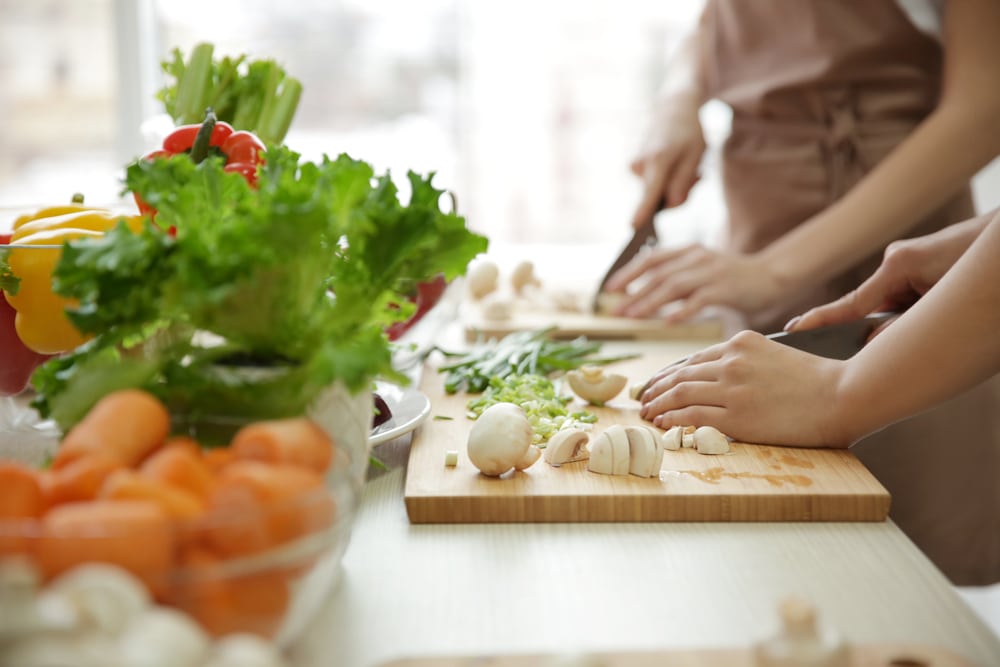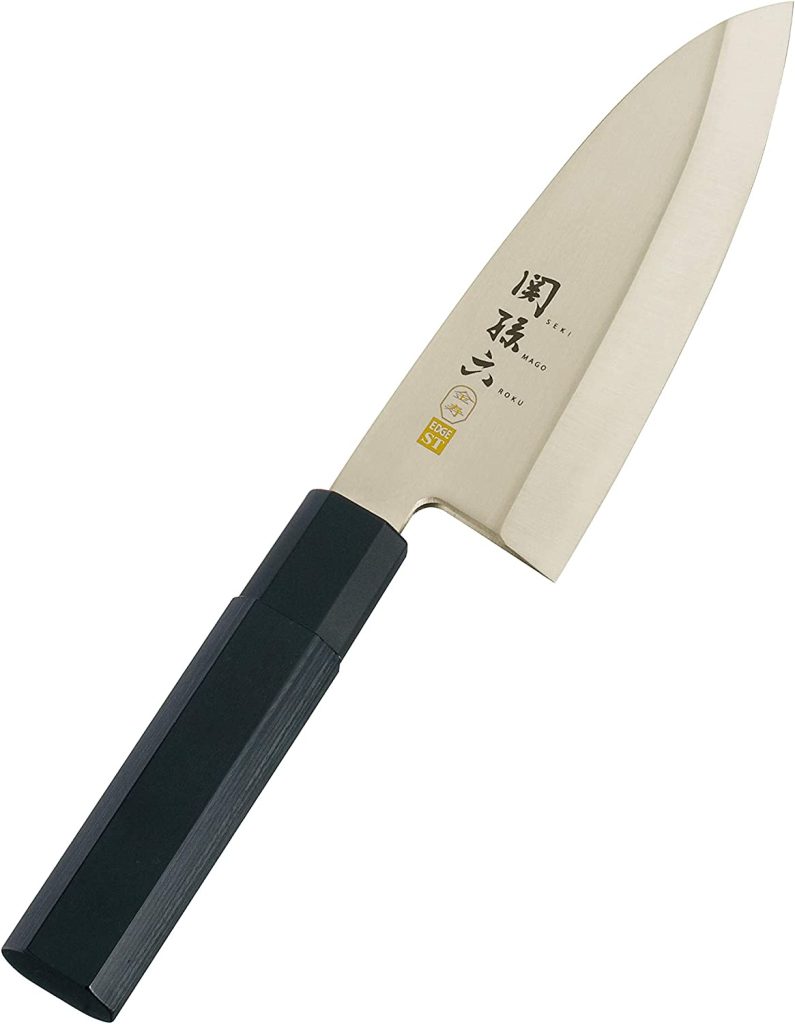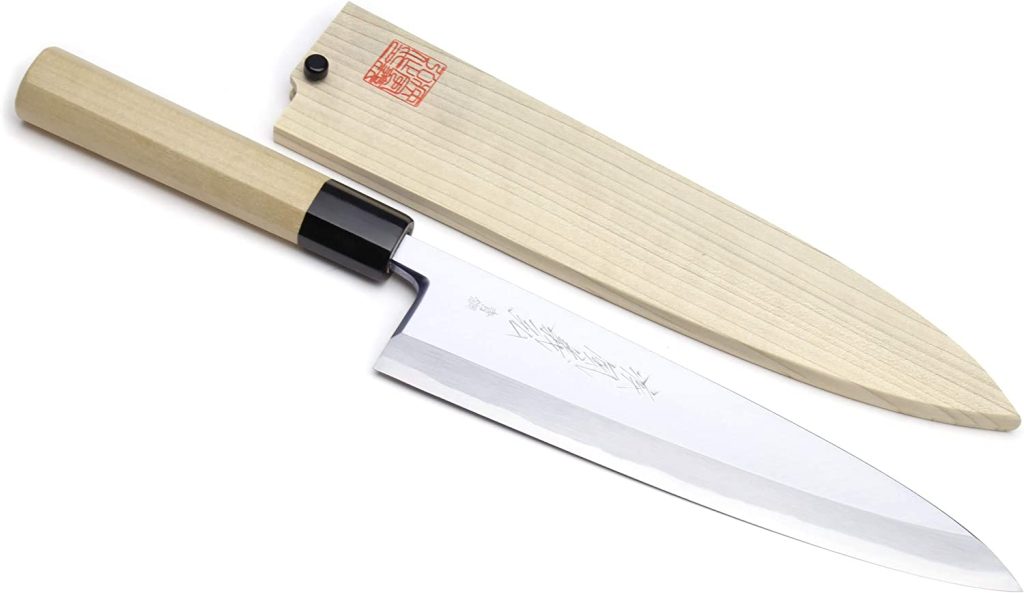Japanese cuisine is revered around the world for its balance, elegance, and downright deliciousness. Countless Japanese meals use cuts of fish to great effect. Deba knives are purpose-built tools that make preparing these cuts much easier. The question is, what’s the difference between a Mioroshi Deba and a Deba knife? On this page, we’ll dive into the Deba VS Mioroshi Deba question.
We’ll cover what sets each knife apart and how to know which one is best for you.
Deba Overview
Standard Deba knives are the mainstays of most Japanese fishmongers and restaurants. They’re thicker than average and are designed for fileting fish without damaging their delicate flesh. A direct translation of the term “Deba” is “pointed carving knife.”
The angle of most Deba blades makes them ideal for beheading and then deboning fish with ease. They’re also used to cut meat by some cooks but they’re not designed for denser foods or bigger bones.
Deba Knife Thickness
Deba knives feature blades up to 9mm thick. While this would be far too wide for a typical chef’s knife, it’s perfect for the powerful cuts necessary to cut cleanly through the entire body of a fish. The shape of most Deba also makes deboning much simpler if you’ve got the requisite skills.
Deba Knife Weight
The thicker, carbon steel blade used for most traditional Deba knives adds a reasonable amount of weight. A well-balanced model will still feel great in the hand; it’s just worth keeping in mind that these aren’t lightweight kitchen tools. After all, they’re designed for lopping off fish heads!
Materials and Handle
A traditional Deba knife is made using carbon steel. This material can be exceptionally sharp and hard but does require a little extra maintenance in the form of regular oiling and extra-careful cleaning.
These days, stainless steel versions are available so look out for them if you prefer this material. Keep in mind that many Deba knives use oval or hexagonal handles which can feel uncomfortable to western cooks. Look for German or French-style handles if this matters to you.
Uses for a Deba Knife:
- Fileting and deboning fish
- Heavier cuts like removing fish heads
- Basic meat prep (not by design)
- Basic veg prep (not by design)
Deba Knife Basic Stats:
- Blades 6 – 13 inches long
- Blades 5 – 9 mm thick (0.2 – 0.35 inches)
- 58 – 63 HRC (usually around 60)

Mioroshi Deba Overview
In the past, Japanese fishermen would use two knives on their boats – a Deba knife for fileting and a much thinner Yanagida knife for slicing. A Mioroshi Deba serves as a hybrid of the two.
The main difference between Deba VS Mioroshi Deba knives is blade thickness and length. A Mioroshi Deba knife can still be used to debone and filet a fish but is also thin enough to produce clean, thin slices of flesh.
Mioroshi Deba Thickness
The thickness of a Mioroshi Deba falls somewhere between a traditional Deba and a yanagiba knife. This makes them a perfect hybrid of the two if you’ve got the required level of skill in the kitchen.
You’ll do a worse job of both fileting and slicing with a Mioroshi if you’re an inexperienced chef.
Mioroshi Deba Ease of Use
The blades of these knives are more brittle VS a traditional Deba. This means you’ll need to work with a higher level of care and precision to achieve the results you’re looking for. Skilled cooks only for this one!
Mioroshi Deba Tip
The blade of a Mioroshi Deba features a more acute tip than traditional Deba users may be used to. This makes incisions and slices much easier but can damage any fish you’re deboning if you’re not skilled with your blade.
Uses for a Mioroshi Deba:
- Deboning and slicing fish (more skill required)
- Light kitchen prep
- Meat prep (not by design)
- Veg prep (not by design)
Mioroshi Deba Basic Stats:
- Blades 6.5 – 13 inches long
- Blades between 3 – 6 mm (0.12 – 0.24 inches)
- HRC 61-63
Deba vs Mioroshi Deba – The Headline Differences
When comparing Deba VS Mioroshi Deba knives, the most obvious differences are blade thickness, length, and tip design. Traditional Deba knives are thicker and designed primarily with fileting in mind. Their tip and blade angles are designed to minimize damage when deboning fish.
Mioroshi Deba is thinner, slightly longer, and features a more acute tip than Deba knives. They’re designed to both filet and slice fish but require more skill to achieve each task effectively. Both knives are Japanese in origin and can be found with hexagonal, oval, or more “western” handles.
| Knife | Deba | Mioroshi Deba |
| Blade Length | 6 – 13 inches | 6.5 – 13 inches |
| Blade Thickness | 5 – 9 mm (0.2 – 0.35 inches) | 3 – 6 mm (0.12 – 0.24 inches) |
| Flexibility | None | None |
| HRC | 58 – 63 | 61 – 63 |
| Main Purpose | Fileting fish | Fileting and slicing fish |
Deba vs Mioroshi Deba – Which One Should I Choose?
It’s only worth buying either of these knives if you regularly prepare fish for your meals. If you’re relatively inexperienced – or already have a knife for fish slicing – a Deba knife might be the right choice for you.
If you’re preparing fish for your meals all the time and are tired of reaching for multiple knives when moving through the steps of fileting, deboning, and then slicing, a Mioroshi Deba could be worth considering. Just make sure you have the dexterity to use it properly.
Remember that a more flexible, western-style fileting knife will likely be easier for a newbie to use and will certainly be kinder to your wallet.
Deba Recommendation
For our money, this Deba knife is absolutely fantastic:
[Kai Seki Magoroku Kinju ST Japanese]

Mioroshi Recommendation
We’re in love with this Mioroshi Deba knife:
[Yoshihiro Hongasumi Blue Steel Mioroshi]

Final Thoughts
We hope you’ve found the information on this page helpful. For pure fileting with Japanese excellence, a Deba knife will be your favorite kitchen companion. For a hybrid approach that requires a bit more skill, opt for a Mioroshi Deba.




Post Your Thoughts